Contemplating hedging? Think outside the box
Japanese box thrives in warmer climates, the English box is best in the cold, but there are alternatives for low hedging if you’re looking for something different, something native or with added appeal.
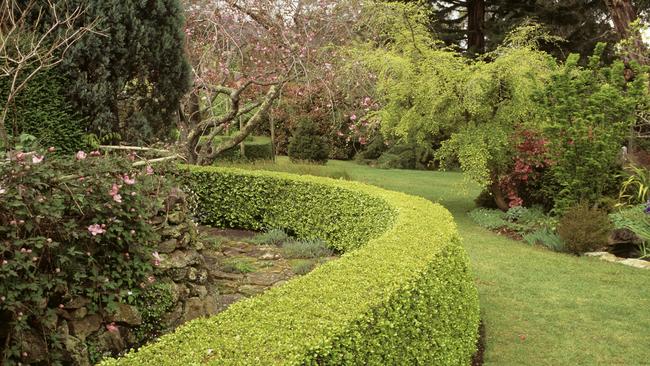
Box, or botanically Buxus, is the classic plant for formal hedging and topiary.
Japanese box (Buxus microphylla var. japonica) is the best type for warmer climates and has glossy, bright green foliage. English box (B. sempervirens) thrives in cold climates and has darker, pointier leaves. But there are alternatives for low hedging if you’re looking for something different, something native or with added appeal such as flowers.
Top of my list is an upright and narrow form of Indian hawthorn, Rhaphiolepis ‘Snow Maiden’. It has white flowers in spring, takes sun or part shade and grows to 1m tall. In sunny, dry spots try an upright rosemary called ‘Tuscan Blue’ – it’s edible and its pretty blue flowers attract bees and butterflies.
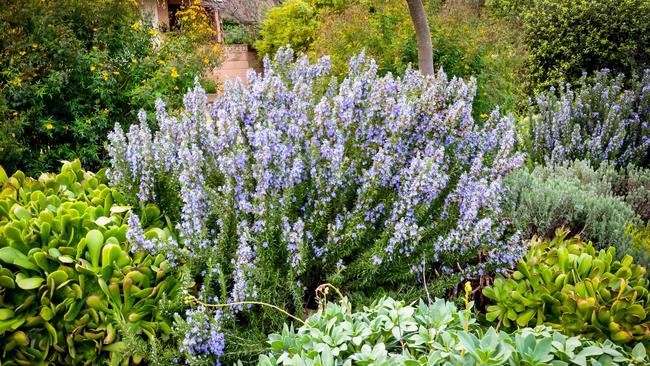
Murraya ‘Min-A-Min’ is a tiny-leafed, compact version of the popular large murraya, both with fragrant, white flowers.
Native choices include Leptospermum ‘Fore Shore’, a dwarf tea tree with dense, grey-green foliage that is super tough, especially in coastal gardens. Callistemon ‘Better John’ is a dwarf bottlebrush with red flowers contrasting against blue-green foliage, while Westringia ‘Grey Box’ and ‘Aussie Box’ are dwarf forms of coastal rosemary with fine, silvery leaves, ideal for clipping.
LATE WINTER ALOES
Aloes are waterwise succulents with architectural form and nectar-rich flowers that attract birds. The Aloe-Aloe range of hybrids includes these star performers in flower now:
‘Southern Cross’ bears masses of yellow flowers in winter on a mid-size plant whose grey leaves have a decorative red edge.
‘Big Red’ is an excellent large feature plant, having chunky grey-green leaves with pink winter tinges, and clusters of rich red blooms.
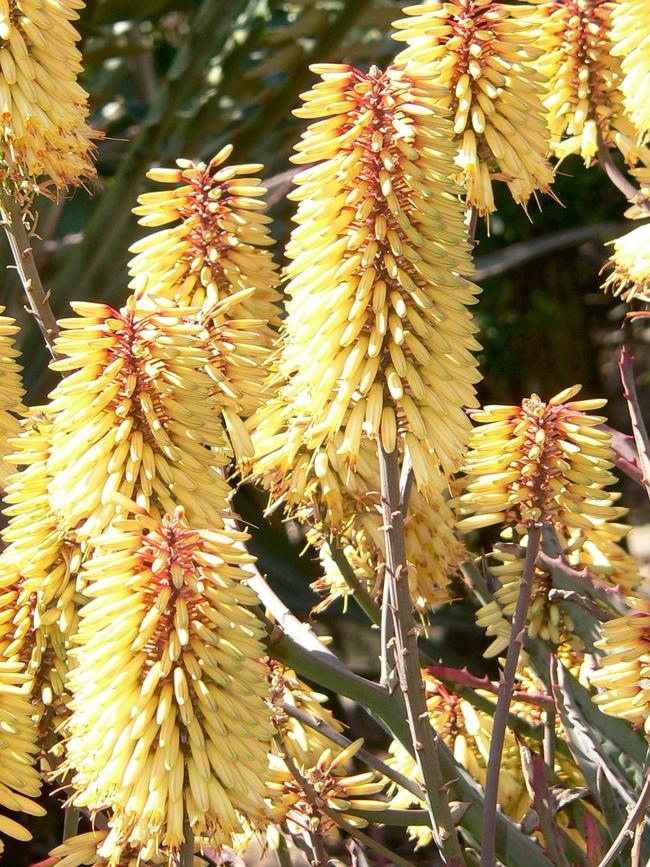

‘Apricot’ produces branched candelabras of flowers mainly in the cold months but also throughout the year, on a medium size plant.
‘Ivory Dawn’ offers bicoloured flowers most of the year from a mid-size, stemless rosette of smooth green leaves.
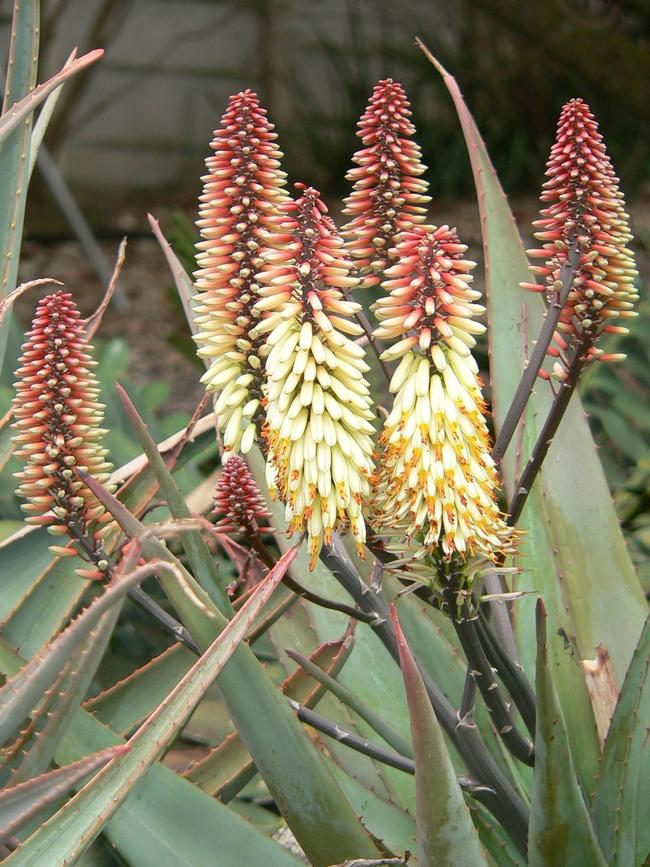
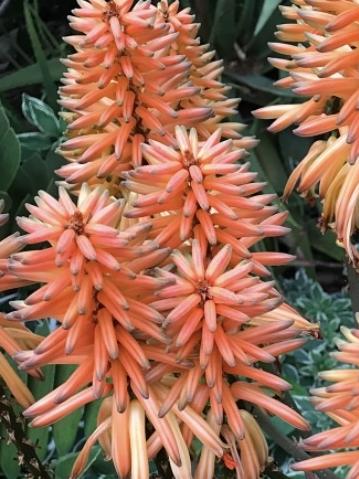
Q&A
After a bag of pelletised chicken manure is opened, how quickly does it lose potency?
Trevor Sauer, Mapleton, Qld
Australian manufacturer Neutrog says its processing of raw poultry manure into fertiliser products stabilises and compounds the free ammonia and other mobile elements such as potassium. The products remain stable and nutrients won’t be lost once the bag is opened, provided the pellets remain dry. Any products with a strong ammonia smell indicate ammonia is being lost to the atmosphere, reducing potency.
In my glasshouse, I raised 20-30 waratahs from seed then transplanted them to individual pots. After growing to 15cm they started browning and dying off. How can I succeed next time?
Jim White, by email
Waratah roots are prone to fungal problems, especially if kept too wet or plants are under stress. Weekly doses of seaweed extract help strengthen plants. After potting up, move them outside into dappled shade to minimise fungal problems. Waratah roots have a symbiotic relationship with a particular beneficial mycorrhizal soil fungus. You might introduce this by incorporating some leaf litter and soil from around your established waratahs.
In recent years parrots have decimated the buds of our red camellias, but they don’t attack the pinks or whites. Some plants are too big to net. Any solutions?
Kate Perkins, Bundanoon, NSW
The same happens with red roses – parrots just like red! Bird scaring tape is probably your best bet, or hang old CDs and DVDs so they spin in the breeze. Shiny wind chimes might also be a deterrent.
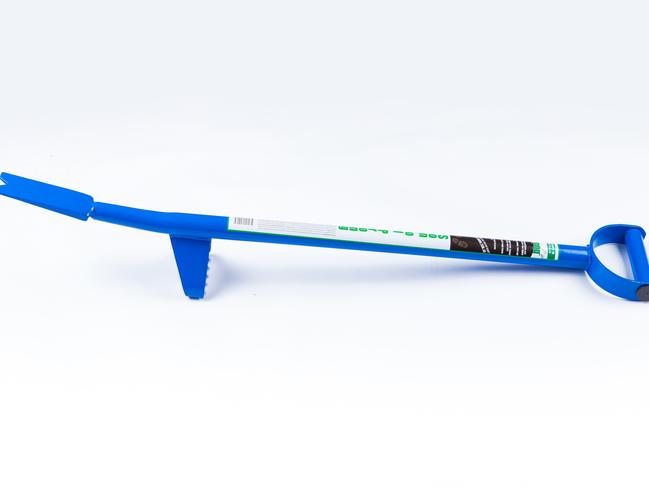
Send your questions to helenyoungtwig@gmail.com The best question for August wins a Son of Prong, worth $108, from the Australian-invented range of digging tools to penetrate hard soil, lever out rocks and lift plants. Various sizes and 25 per cent discount at prong.com.au. July’s winner is Craig Gumley of Perth for his question about box hedges bronzing.



